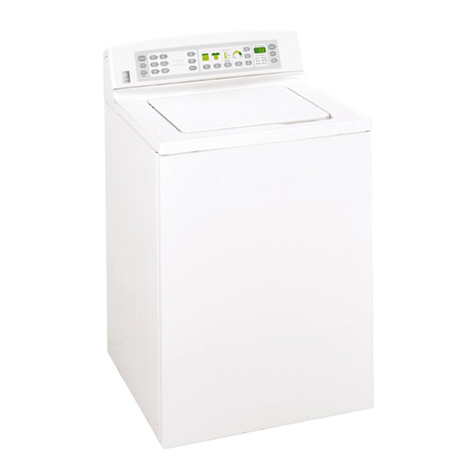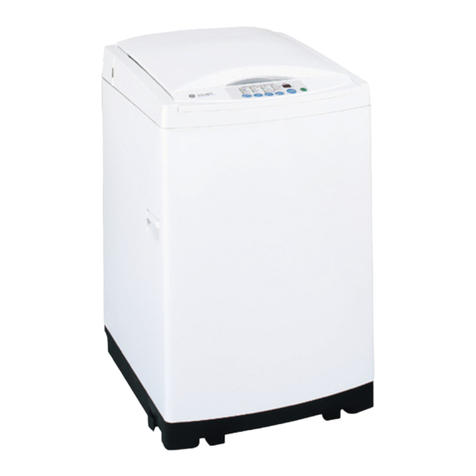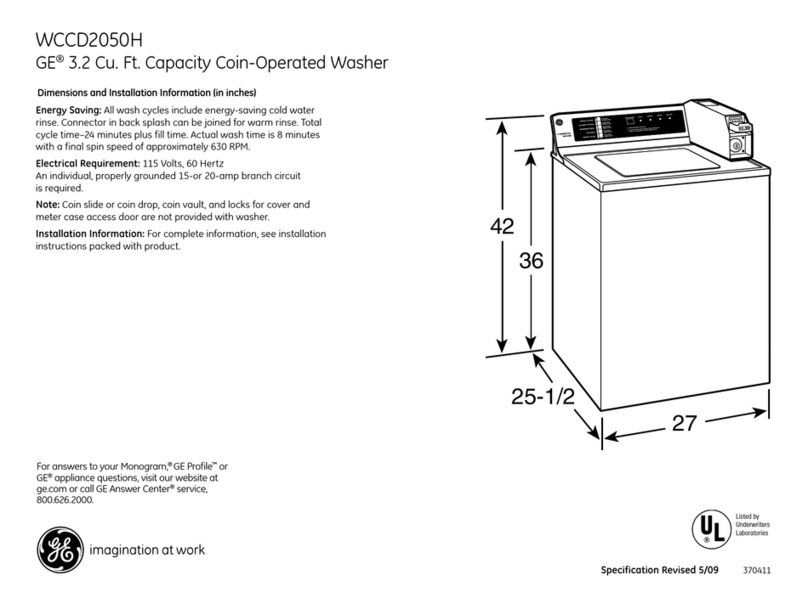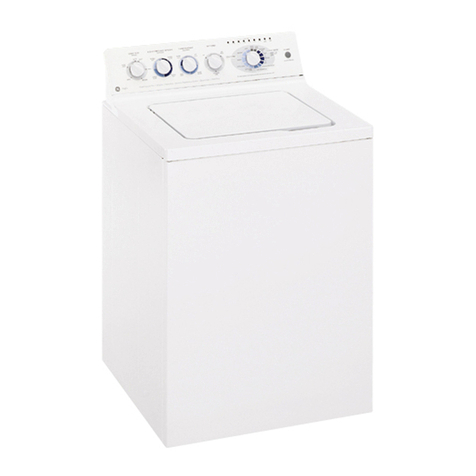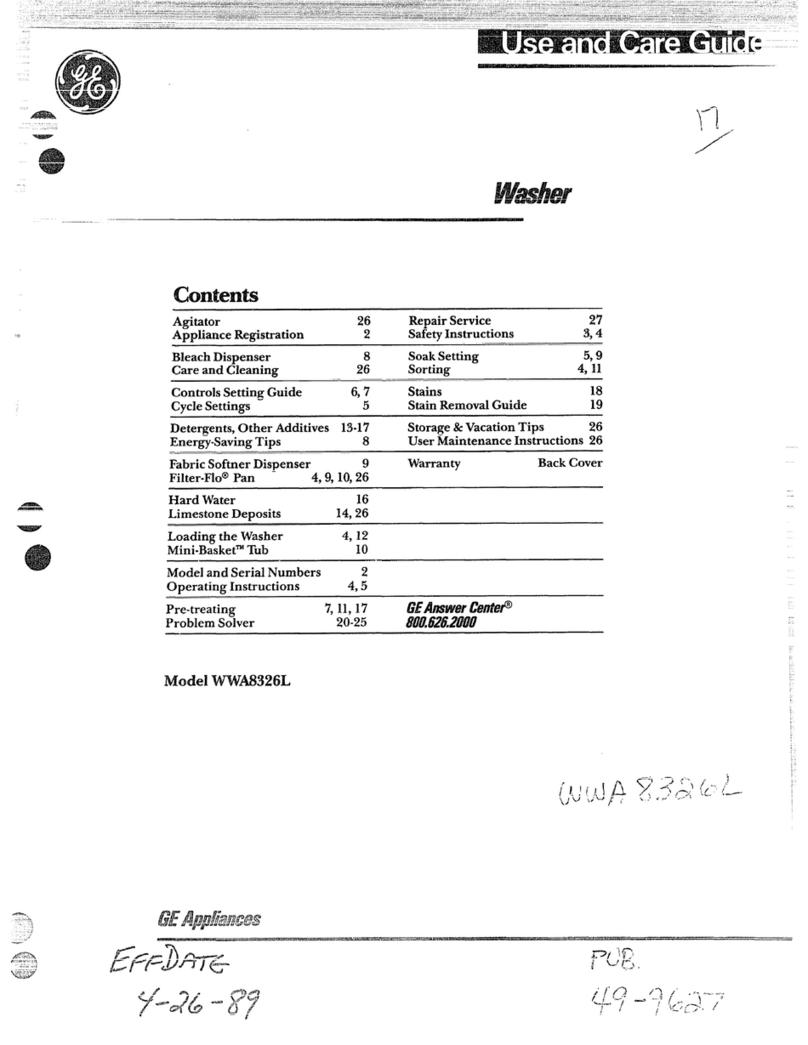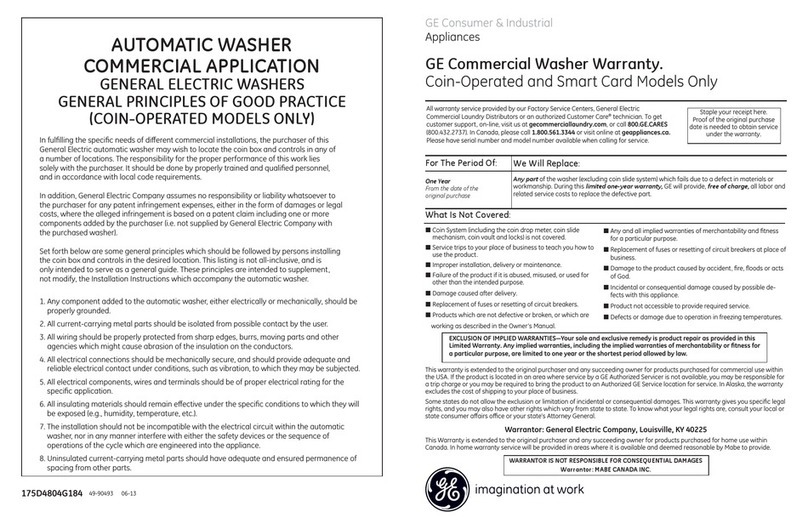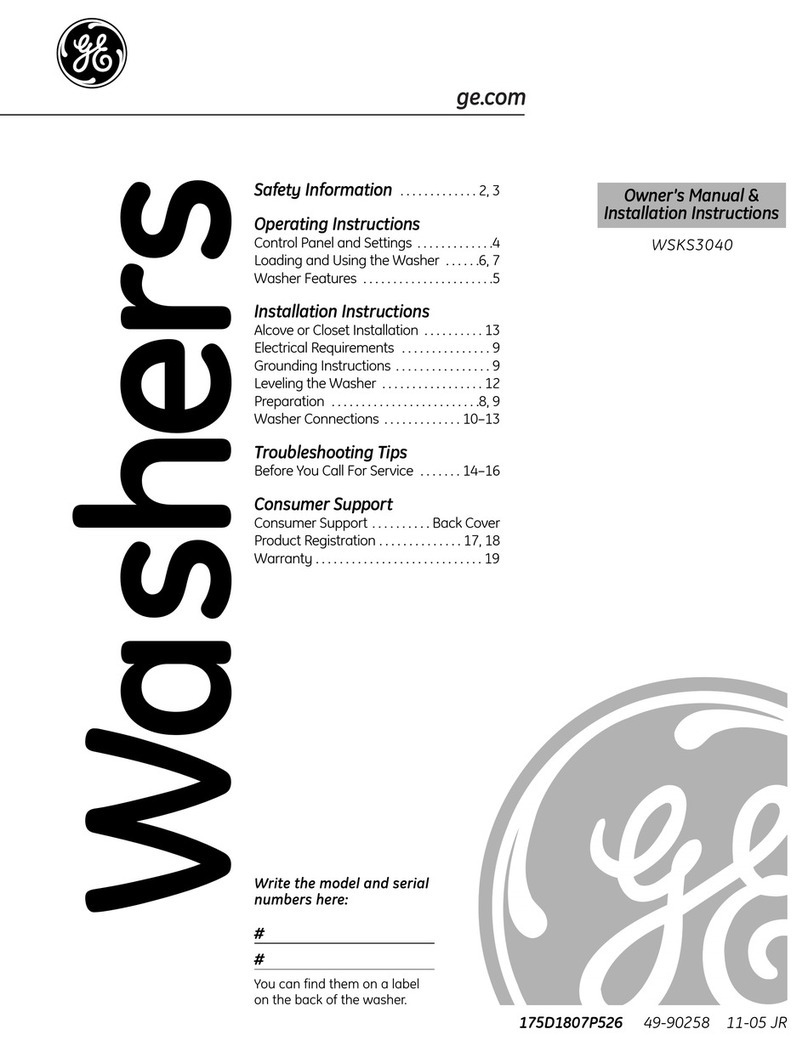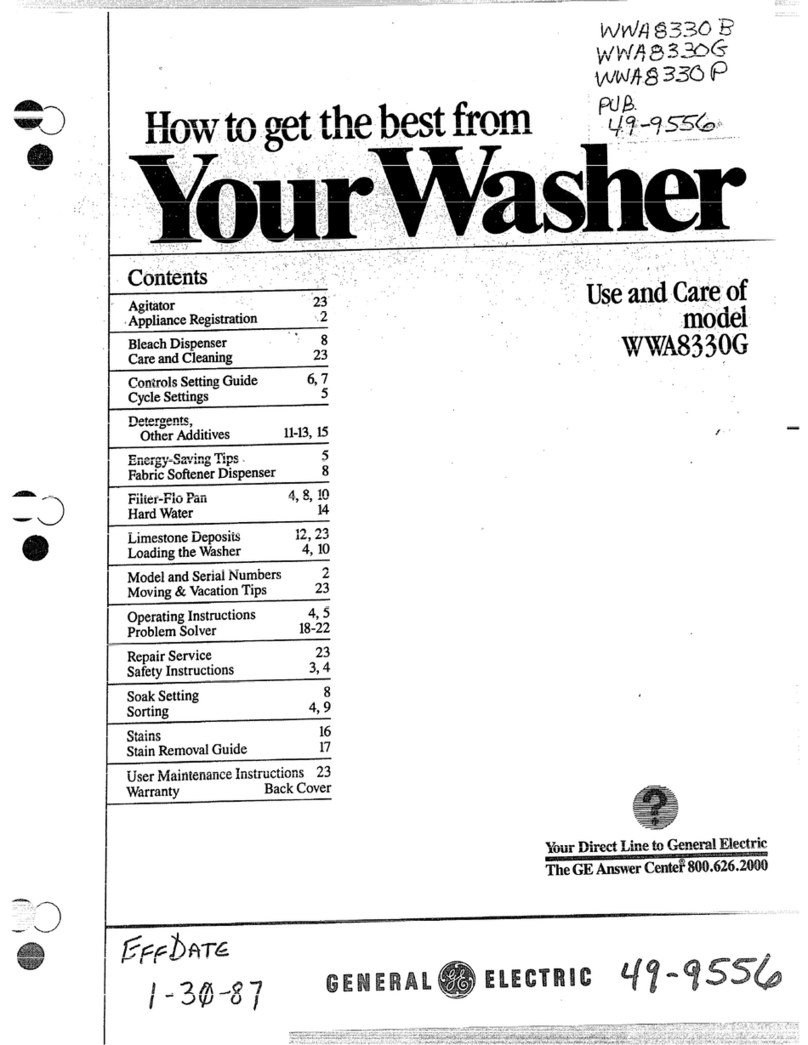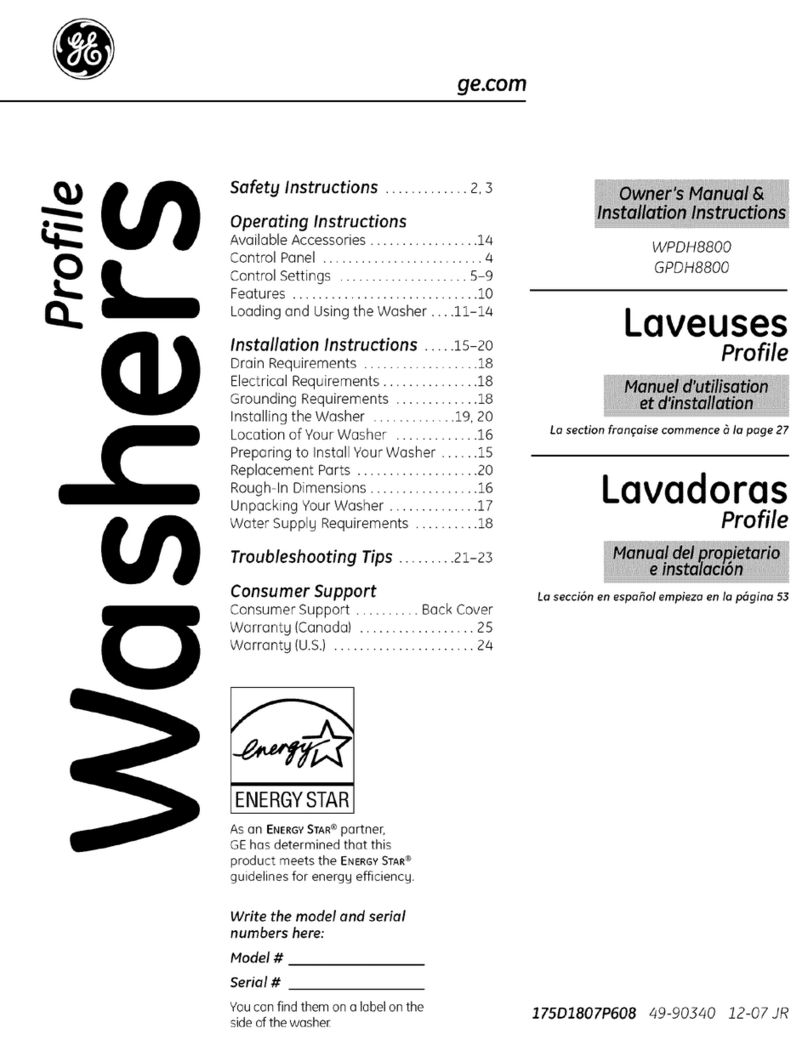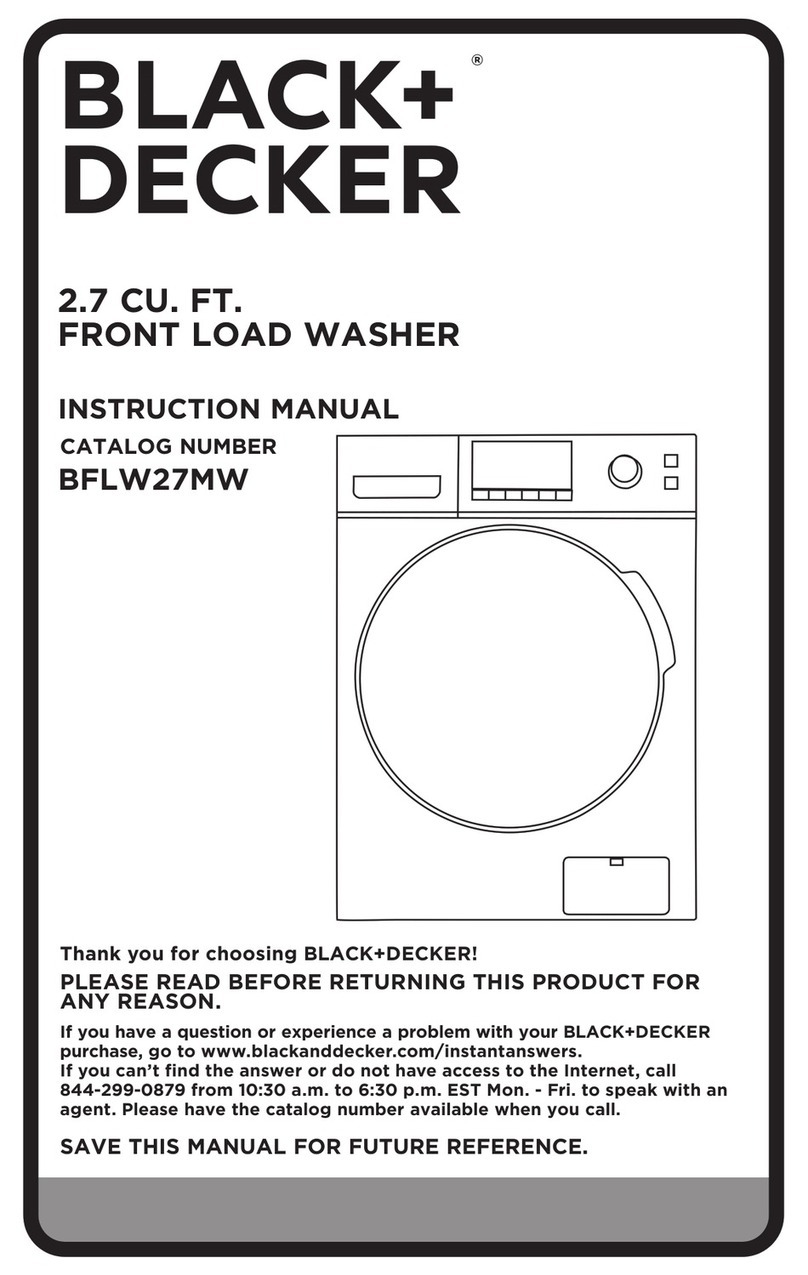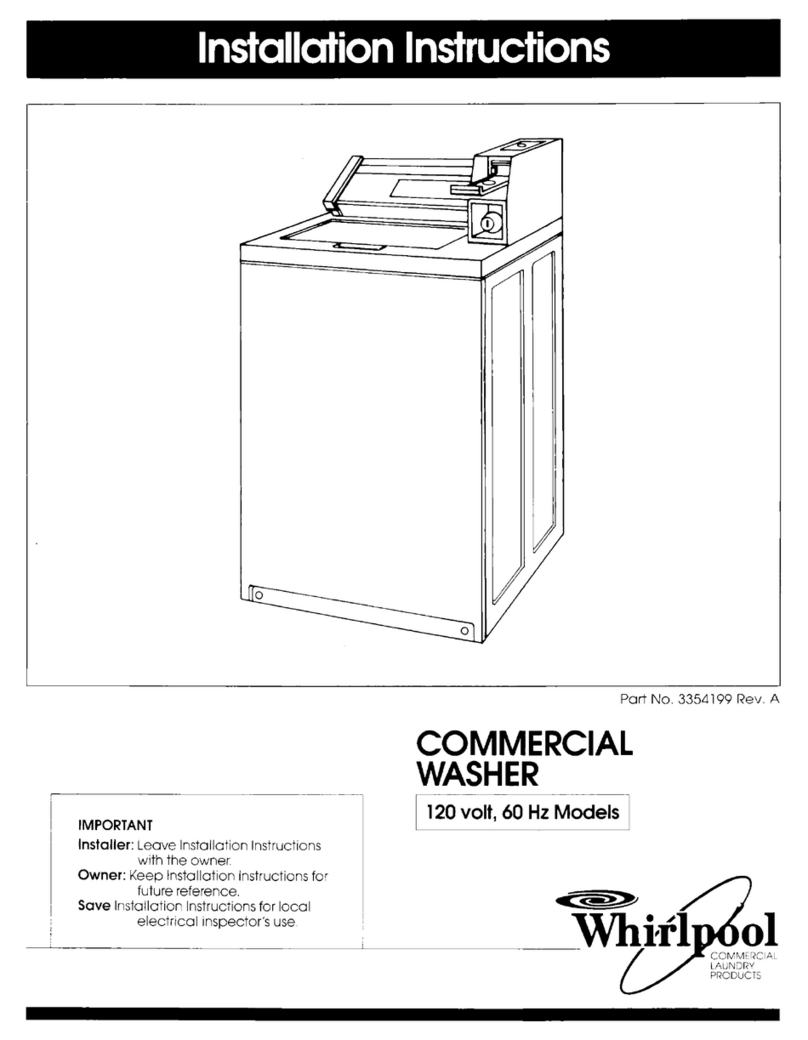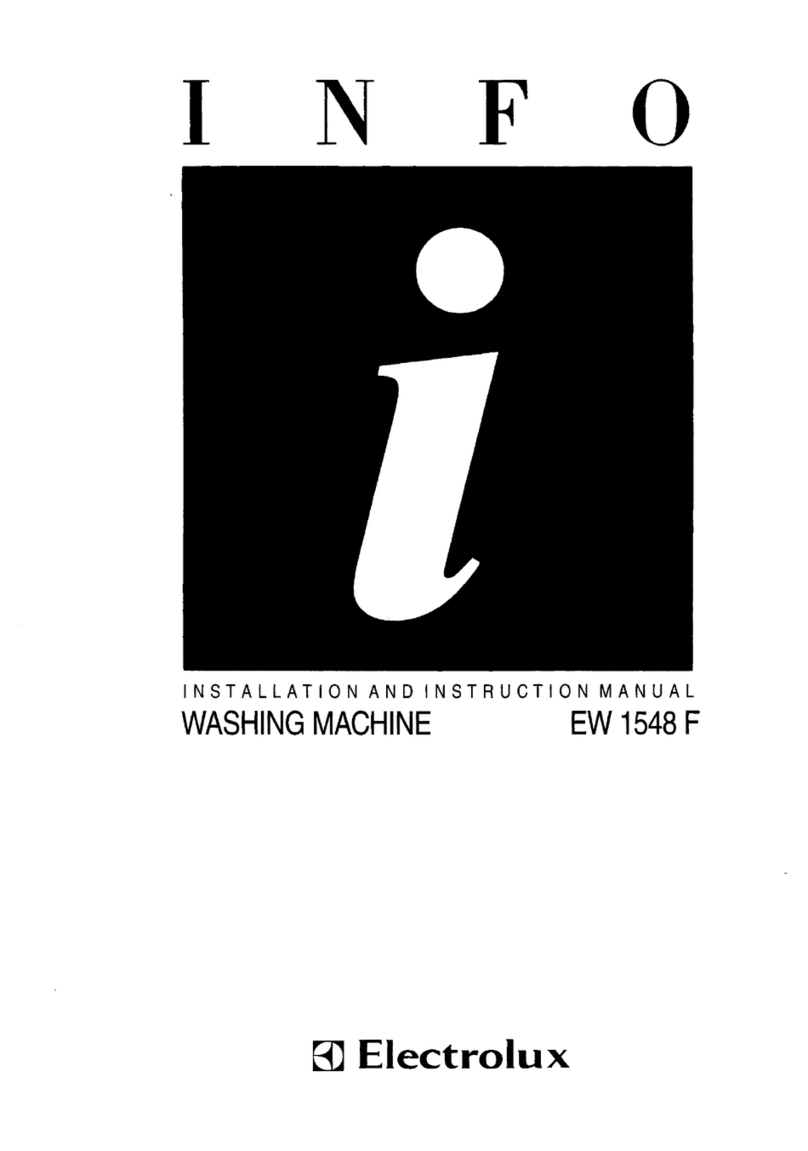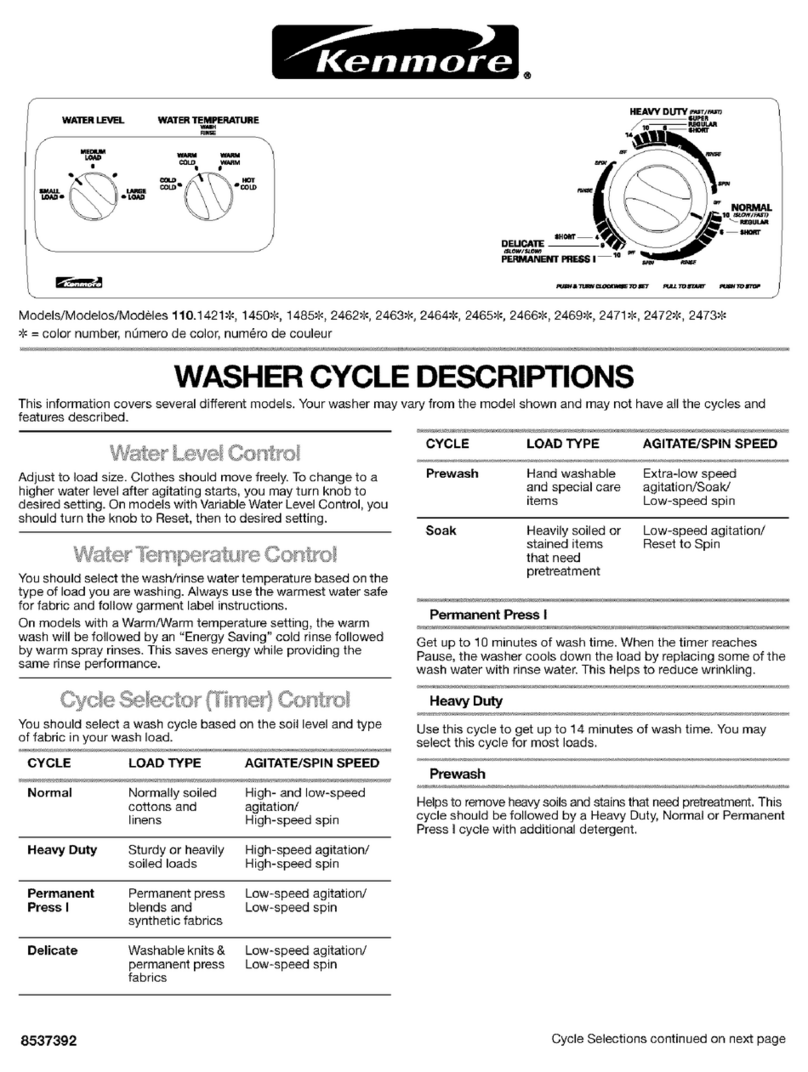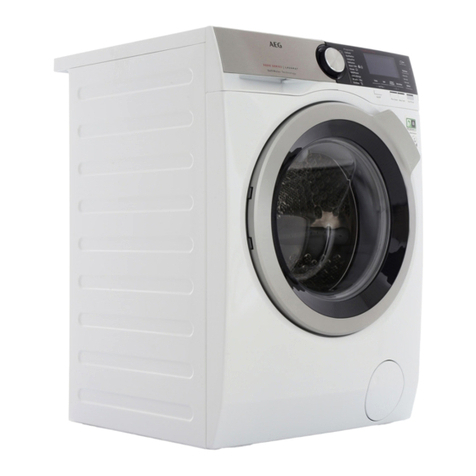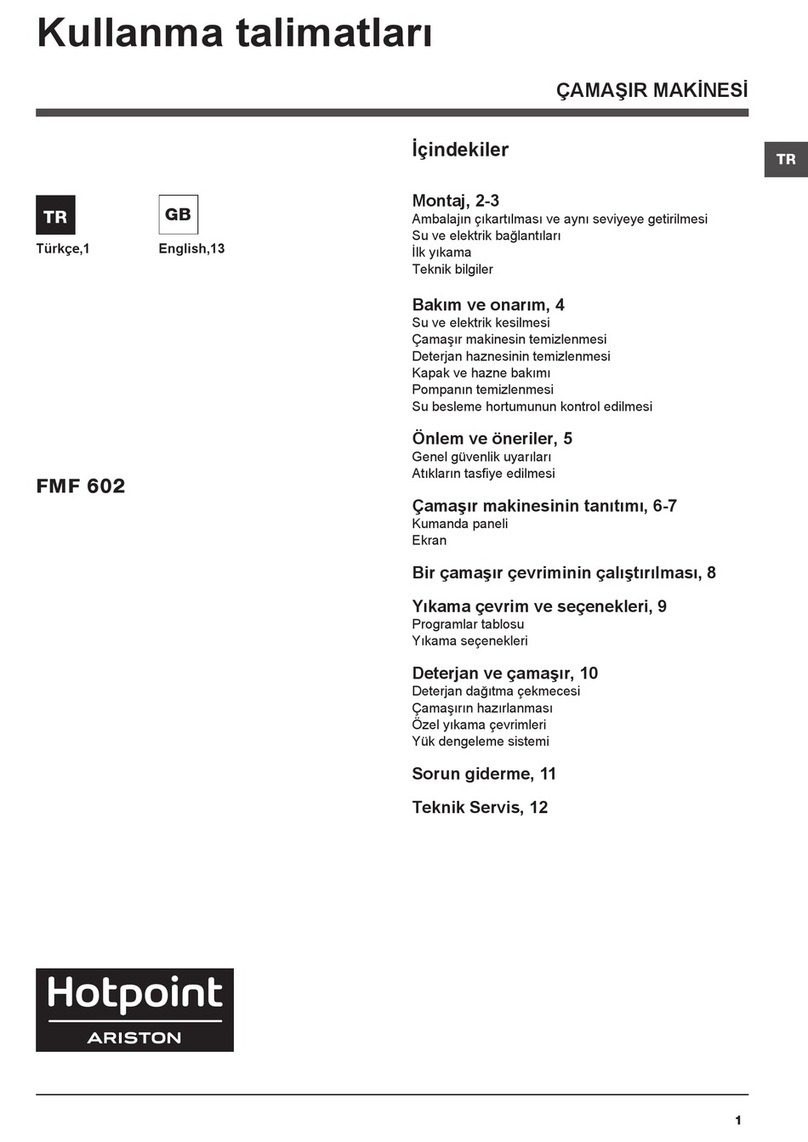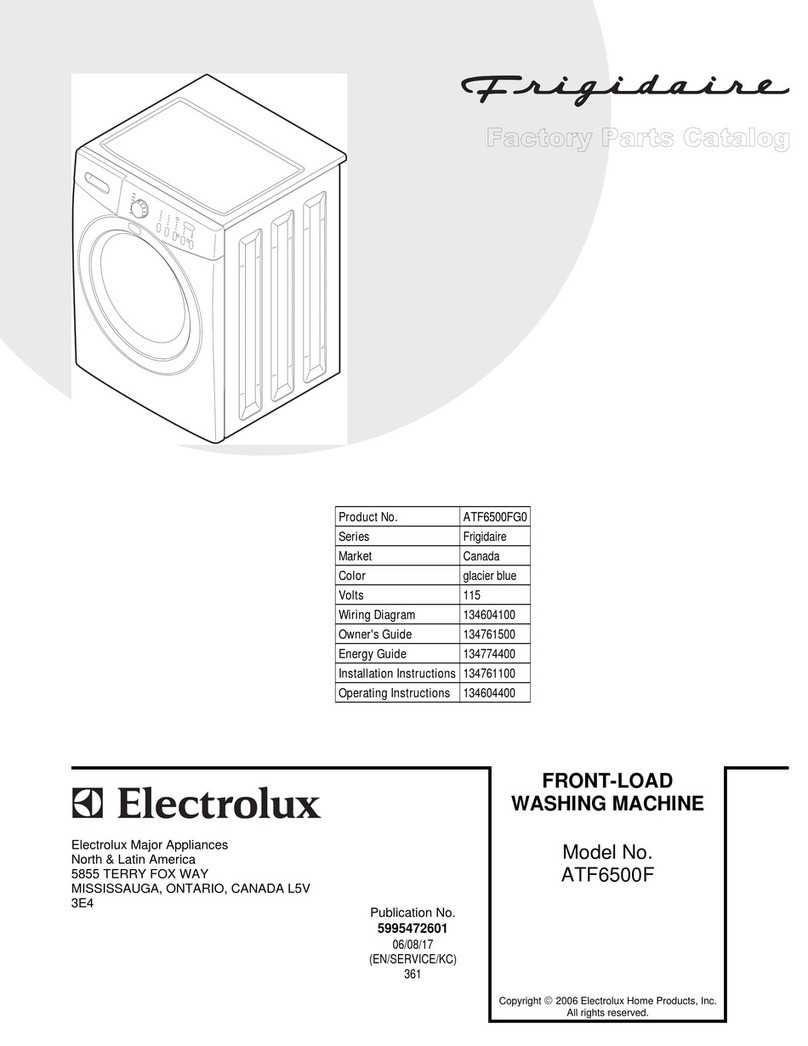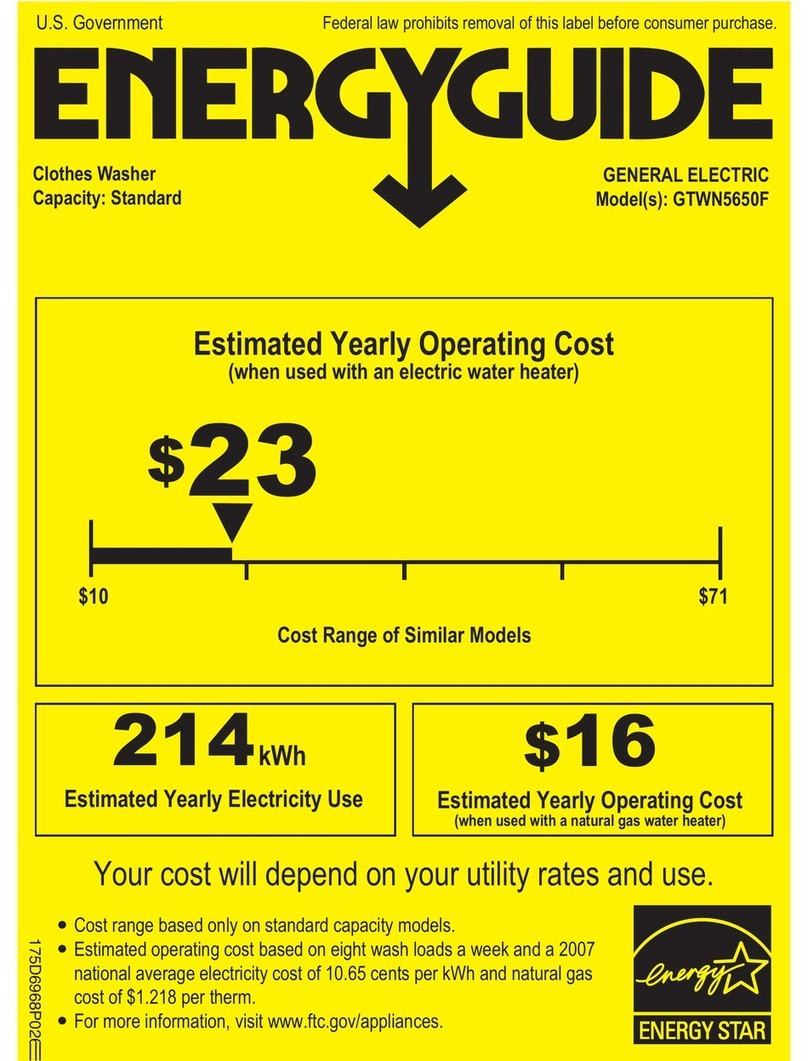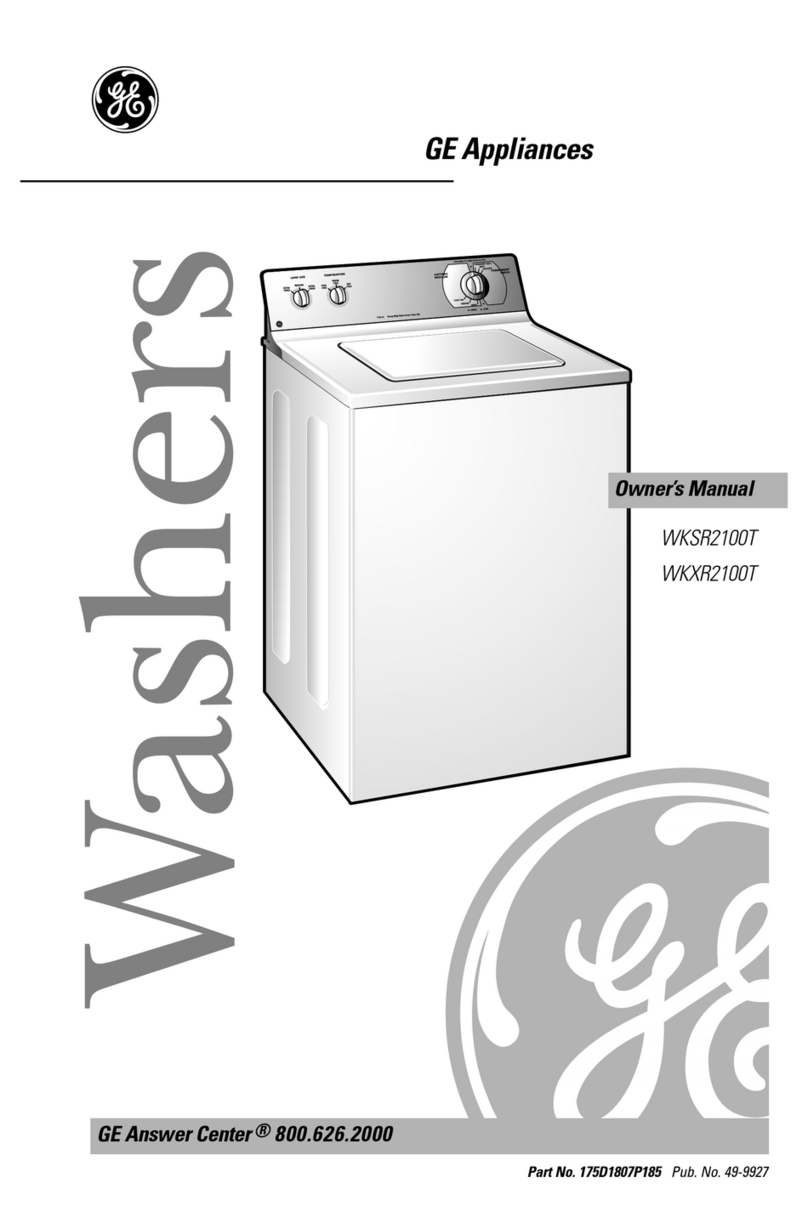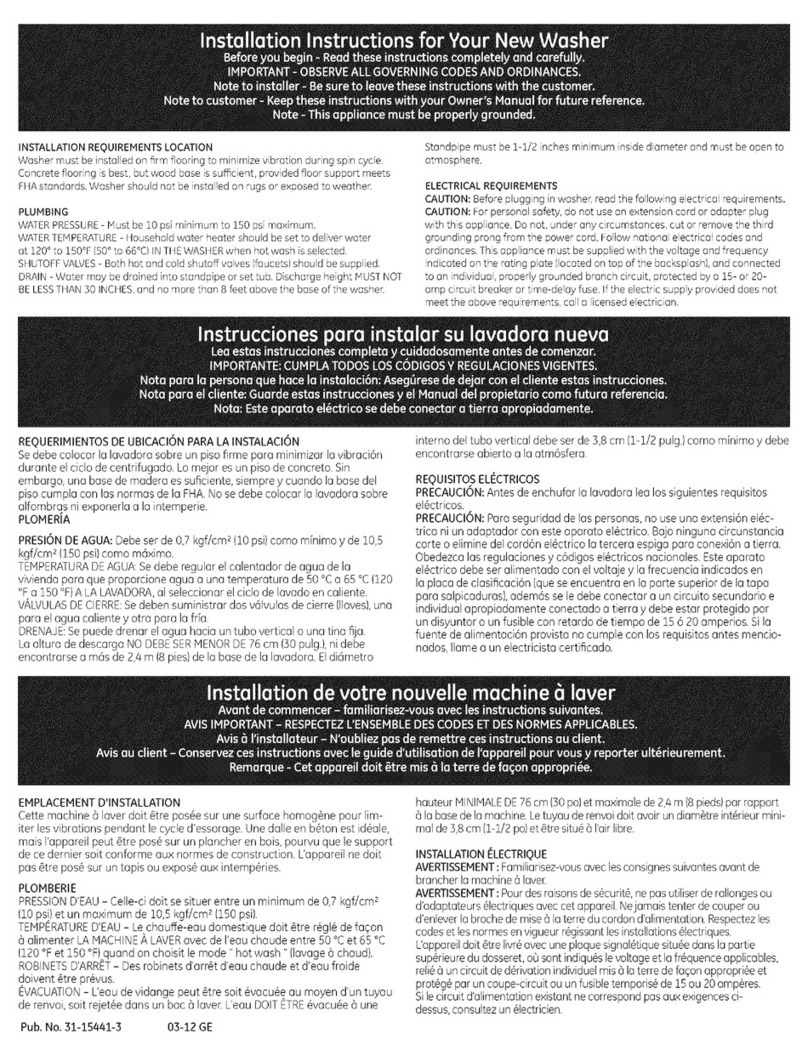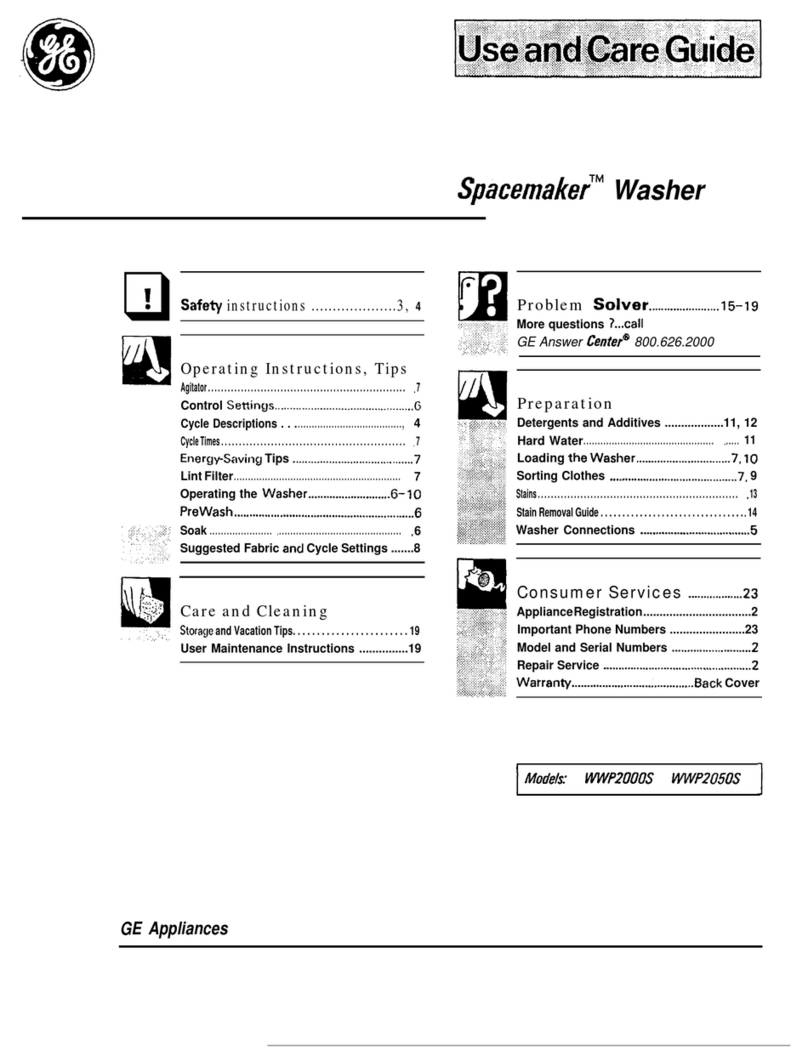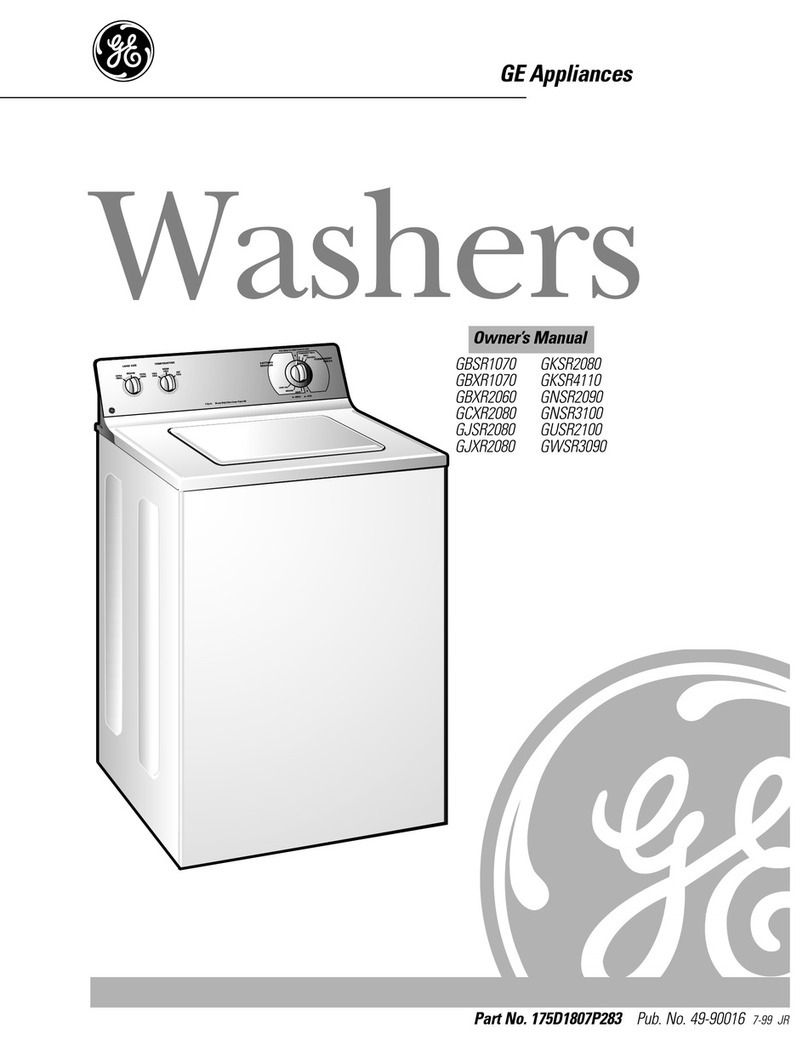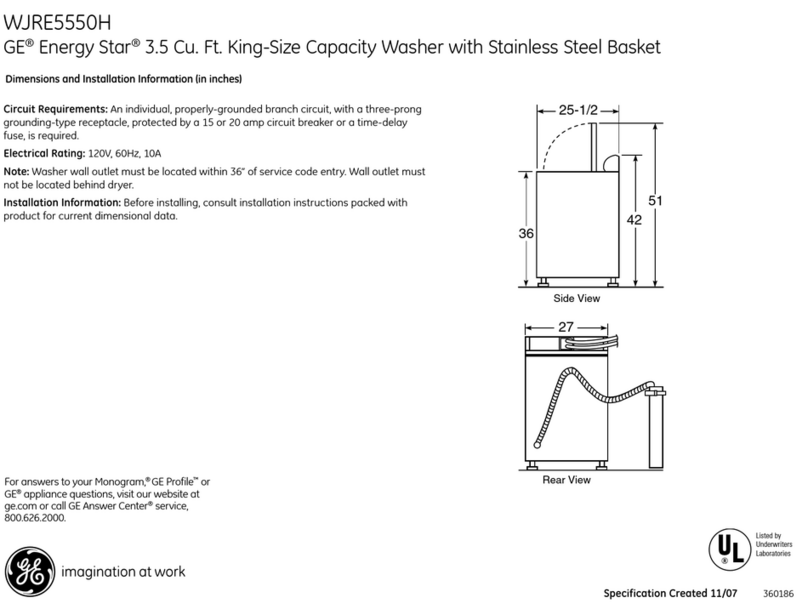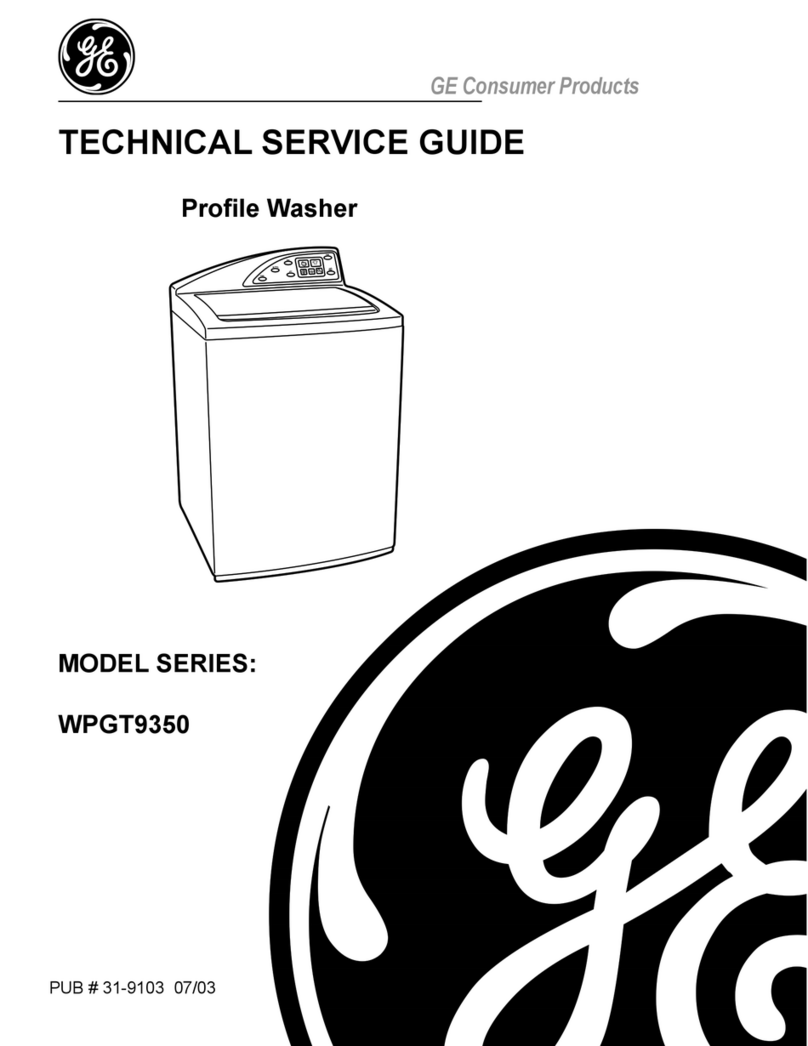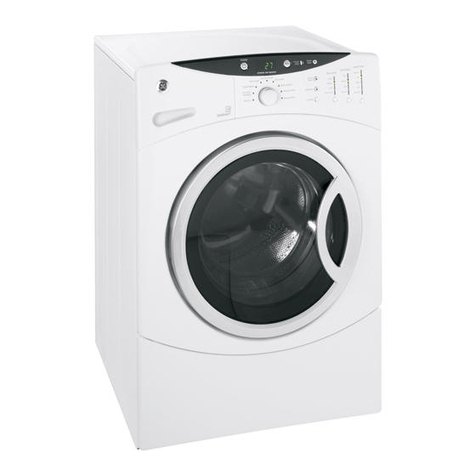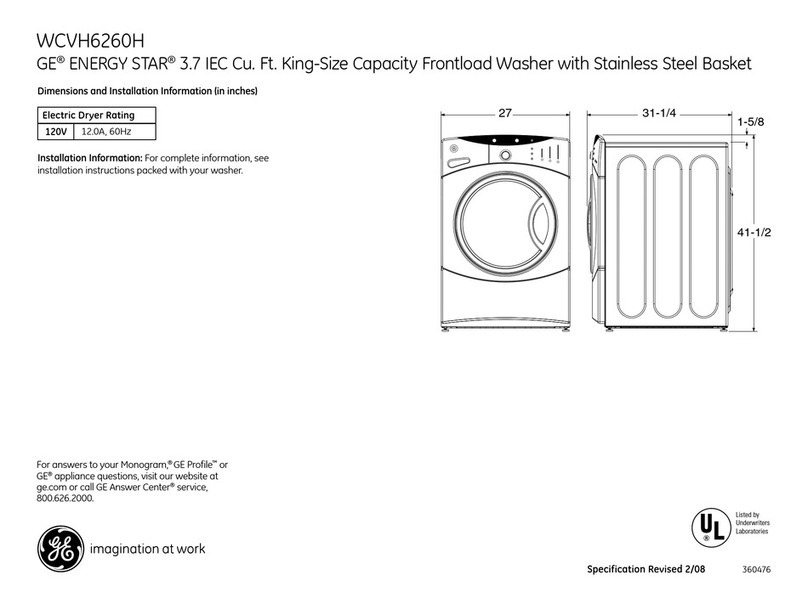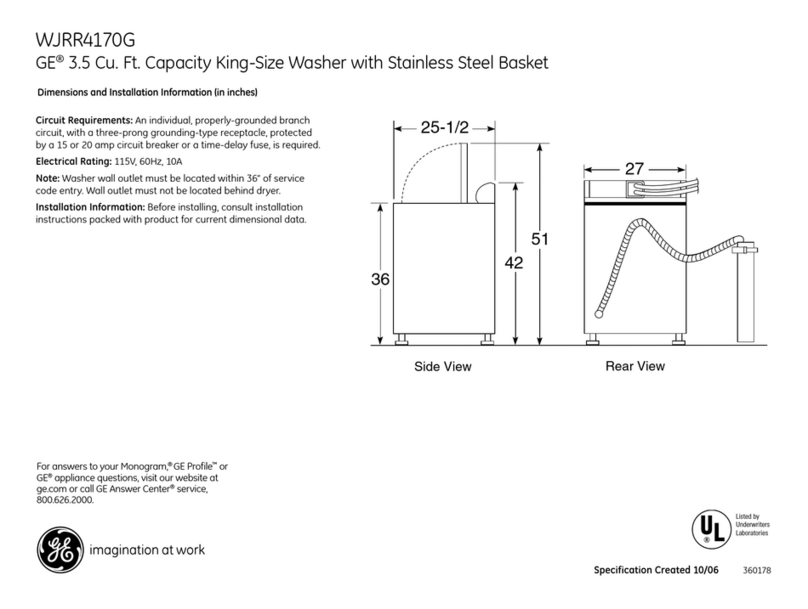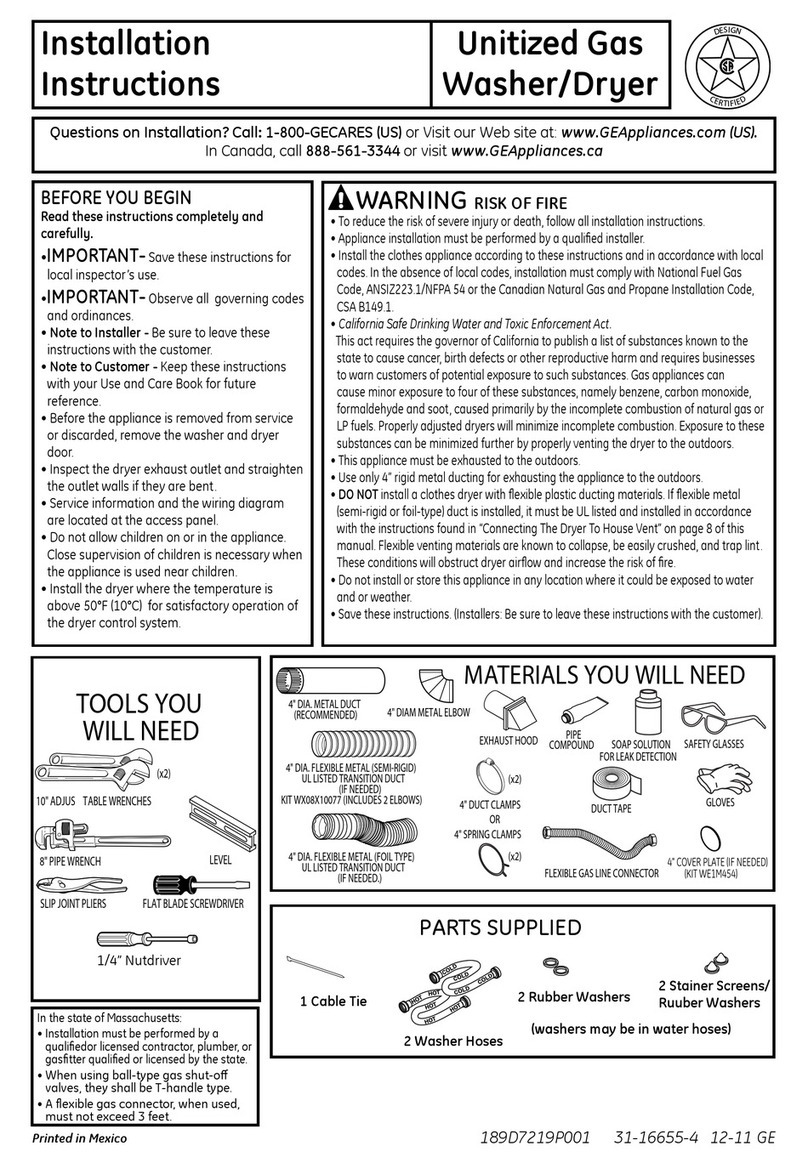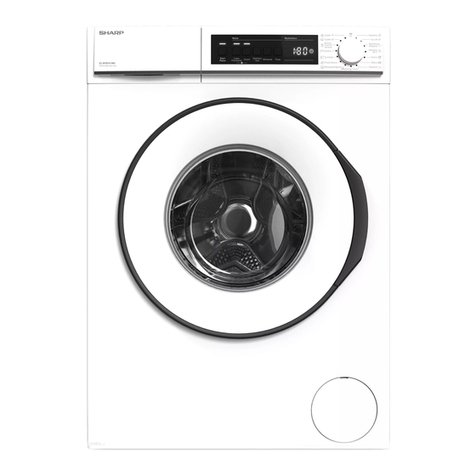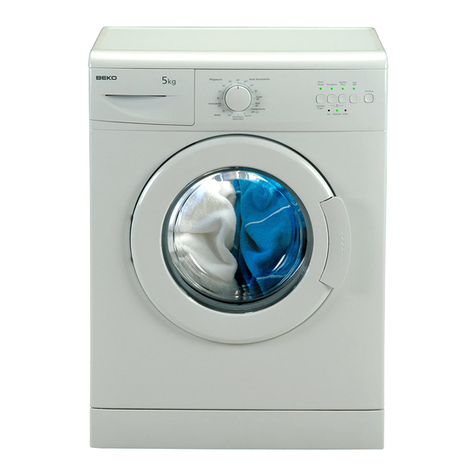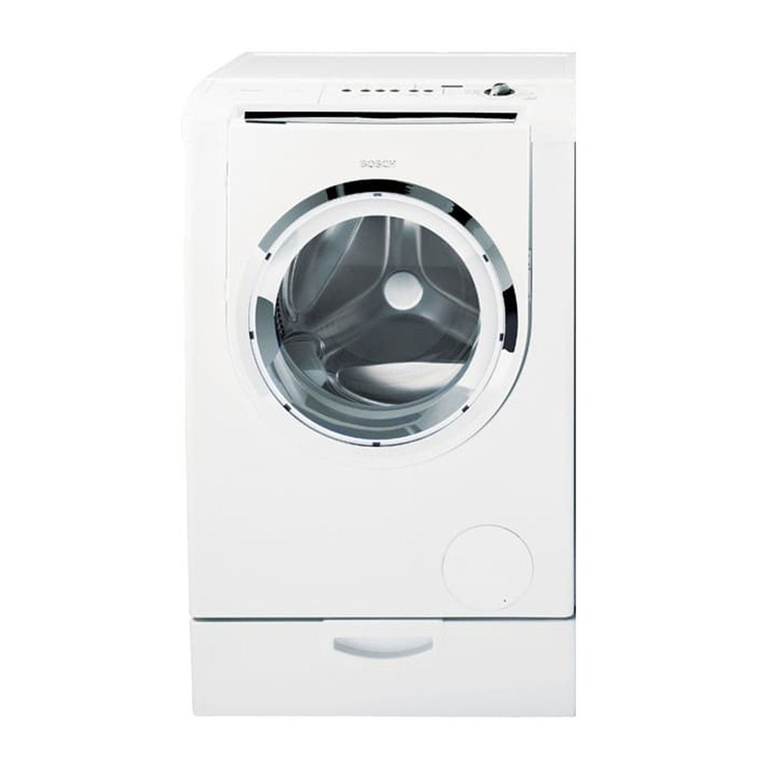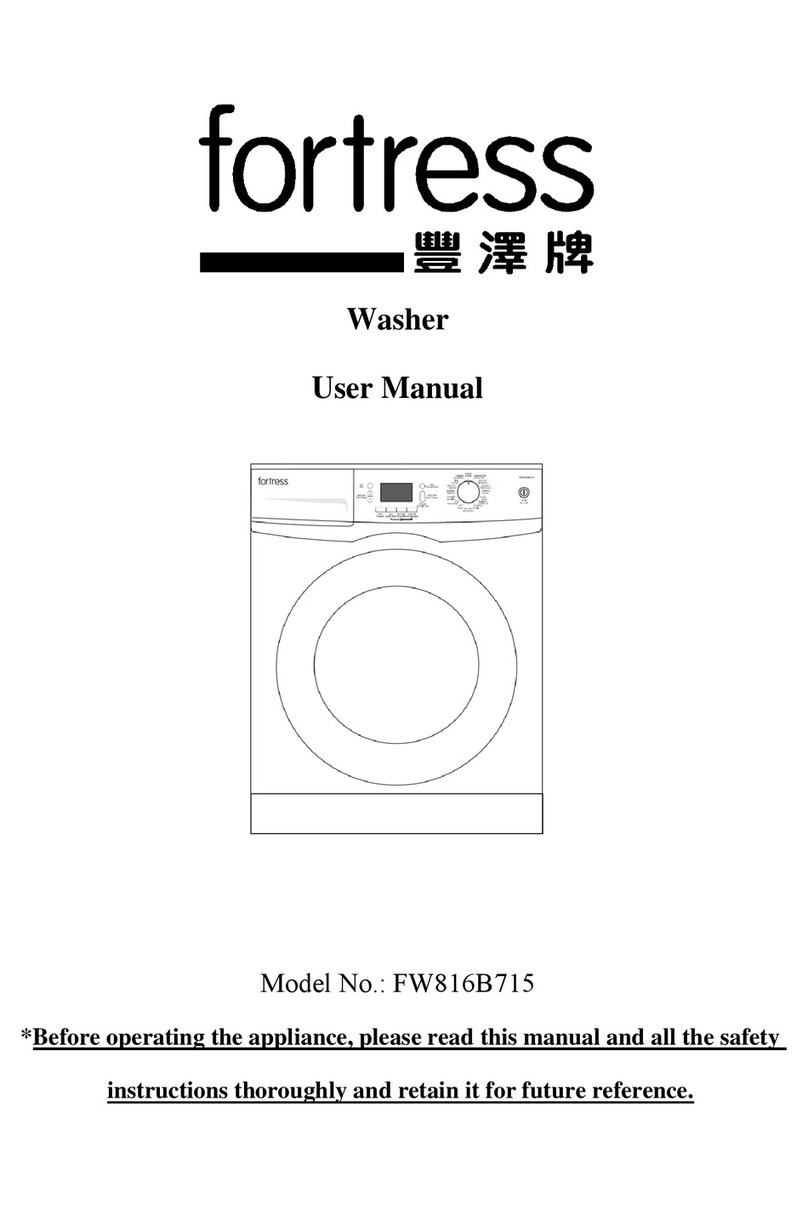
– 9 –
Using the Liquid Bleach
Dispenser
The bleach dispenser automatically
dilutes and dispenses liquid chlorine
bleach at the proper time in the wash
cycle.
1Check clothing care labels for special
instructions.
2Measure liquid bleach carefully,
following instructions on the bottle.
•Never pour undiluted liquid chlorine
bleach directly onto clothes or into
the wash basket.
•Do not pour powdered bleach into
bleach dispenser. Do not place load
items on top of the bleach dispenser
when loading and unloading the
washer.
•Avoid overfilling or splashing
when adding bleach to the
dispenser. The maximum capacity
of the bleach dispenser is one cup
of bleach per wash cycle. Overfilling
could result in early dispensing of
bleach.
3Before starting the washer, pour
measured amount of bleach directly
into bleach dispenser. If you prefer to
use powdered bleach, add it into the
wash basket directly before adding
clothes.
WARNING!
Do not mix
chlorine bleach with ammonia or acids
such as vinegar and/or rust remover.
Mixing can produce a toxic gas which
may cause death.
The manufacturer’s recommended
amount of undiluted bleach goes into the
bleach dispenser. During the final
“Infusor” wash action, the bleach is added
to the wash load. This ensures
performance won’t be diminished. Two
sequential flushes through the bleach
dispenser completely remove the bleach
from the dispenser. Any residual liquid left
in the dispenser at the end of the cycle is
water, not bleach. To prevent self-
siphoning of the bleach into the wash
basket and damage to your clothes, never
add more than the maximum fill level
marked on the dispenser.
Also keep clothes away from the bleach
dispenser so they don’t absorb any bleach
droplets left around the bleach dispenser.
Using the Dispenser Drawer
The dispenser drawer contains
2 compartments:
•Liquid Fabric Softener
• Liquid or Powder Low-Sudsing,
High-Efficiency Detergent
The dispenser automatically dispenses
additives at the proper time in the wash
cycle.
1Slowly open the dispenser drawer by
pulling out the drawer until it stops.
2After adding laundry products, slowly
close the dispenser drawer. Closing the
drawer too quickly could result in early
dispensing of additives.
• Avoid overfilling or splashing when
adding laundry products to the
dispenser. Doing so could result in
early dispensing of laundry products.
At the end of the cycle, you may see
water in the compartments. This is part
of the normal operation of the washer.
NOTE: Do not use bleach in the dispenser
drawer.
TIDAL WAVE Wash System
Your washer has an innovative washing
system which uses rapid spinning
motion and an angled spray to pull
water through faberic. The TIDAL WAVE
Wash system provides a gentler and
more thorough cleaning.
TIDAL WAVE Wash is avaiable only
during COLORS/NORMAL and
WHITES/HEAVY DUTY cycles.
(Continued Next Page)




















